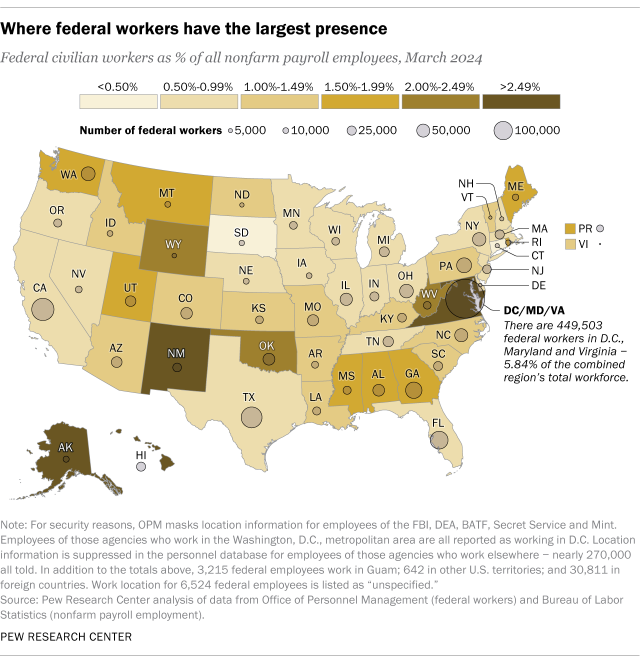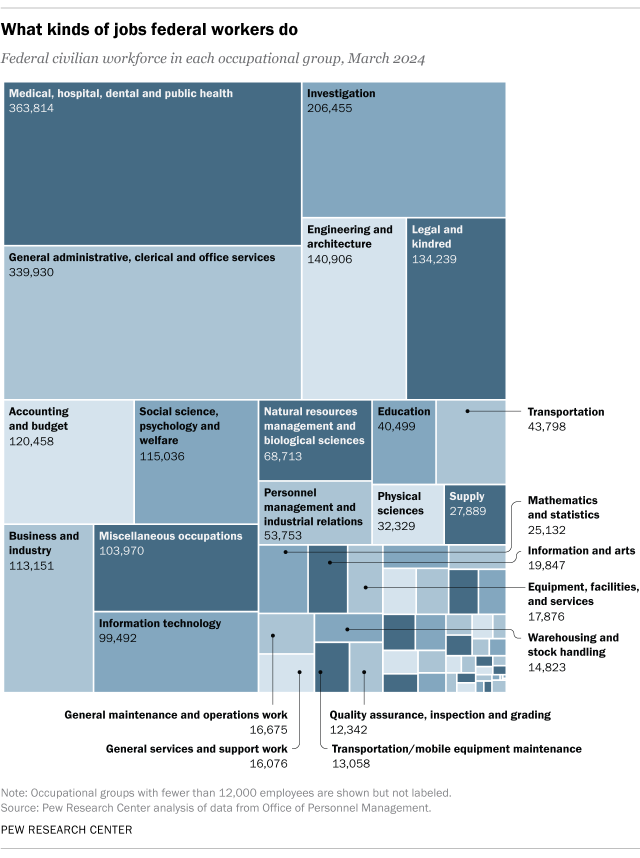Musk and Ramaswamy’s DOGE Strategy: Bully Federal Scientists
The Equation Read More
The saber rattling has been going on for months. On the campaign trail and since the election, the president-elect and his allies and enablers have promised that he’ll fire government scientists and dismantle agencies producing research in the public interest. As his inauguration looms, it remains to be seen how successful he will be in carrying out mass firings of federal employees. But for the moment, the intimidation campaign seems to be having its desired effect: many federal scientists and other civil servants are scared, not just for their jobs and the important missions they support, but in some cases for their personal safety.
The primary perpetrators of this bullying effort are tech billionaires Elon Musk and Vivek Ramaswamy, co-leaders of the dubious, Trump-created Department of Government Efficiency. DOGE isn’t actually a department, though it is unclear exactly what it is. Its real goal doesn’t appear to be government efficiency so much as taking a sledgehammer to government, including federal science agencies, using proposed methods that seem designed to create maximum chaos.
Media reports suggest that DOGE now has a staff of at least 50, who paid Musk-owned X for the privilege of applying for their jobs and now work out of offices leased by Musk-owned SpaceX and communicate secretly via an encrypted messaging platform. DOGE and transition team representatives have begun meeting with staff of actual federal departments (and reportedly asking them who they voted for in November). Journalists and commentators have raised a litany of problems with this approach: conflicts of interest and lack of transparency, legal issues with creating government bodies outside of established rules and procedures, how DOGE staff will be hired and paid, the accuracy of predictions of budget savings DOGE could achieve, and the inappropriateness of billionaires shaping our public science agenda.
With all that as grim context, let’s look at the bullying tactics themselves, of which there are at least four.
Since buying X, Elon Musk has used the social media platform to spread disinformation, according to civil liberties experts, European Union officials, and even Musk’s own AI. Much of that was focused on last November’s election, but Musk and DOGE have since turned their efforts to making false claims about government spending and generally promoting the misconception that the federal government is bloated with civil servants whose work isn’t needed.
In fact, the federal workforce is smaller than it was in 1945 (or in 1990 under Republican president George H.W. Bush), and it even grew slightly during President Trump’s first term:

While the real number of federal employees has remained steady for decades, as a percentage of the US population and the nation’s overall labor force, the federal workforce has shrunk substantially. In 2024, federal employees (excluding the Postal Service) represented just 1.5% of total civilian employment. At $293 billion in 2024, federal workers’ salaries and benefits were just 4.3% of the total federal budget. Federal employee compensation is dwarfed by payments to government contractors, which amounted to $759.2 billion in 2023. And while Trump has long tried to brand the federal workforce as a DC institution, just 15% of federal employees work in DC, Maryland, and Virginia, with the rest—the vast majority—working outside the region, in offices across the country.

Finally, Musk, Ramaswamy, and DOGE probably don’t want you to know that some of the largest categories of federal jobs are dedicated to medicine and public health, engineering, and various scientific disciplines—professions that the public largely trusts to keep us healthy and safe. The following graph from the Pew Research Center puts this in perspective.

Nevertheless, unserious commentators and unscrupulous politicians have a long history of targeting publicly funded science and scientists by taking their work out of context and painting it as silly and wasteful, and we should expect more of that from President-elect Trump, Musk, and Ramaswamy. But the truth is that publicly funded science in the public interest is vital to the nation, and that science that might sound weird can result in important breakthroughs for people’s health and well-being. (Lizard spit, anyone?)
Sowing disinformation and distrust of federal civil servants is just a prelude, making it easier to take the next step: vilifying individual federal employees and setting them up for harassment.
We’ve seen this in the past—consider the case of climate scientist Michael Mann, who as an employee of public universities in the late 1990s and early 2000s was subjected to hate mail, threats, defamation, and spurious legal attacks from anti-science forces allied with the fossil fuel industry. Early last year, Mann won a judgment against his defamers, but that hasn’t stopped threats against climate scientists. And now, we’re seeing Musk and DOGE use similar tactics against individual federal scientists.
Shortly after the election last November, Musk reposted tweets revealing the names and titles of four people (all women, by the way) holding climate-related federal positions that the original poster called “fake jobs.” Internet hordes jumped in with a barrage of harassment and threats. It was so bad that one of the women, an official at the US International Development Finance Corporation who holds degrees in engineering, business, and water science from Oxford and MIT and whose work focuses on helping countries increase their climate resilience through diversification of agriculture, shut down her social media accounts.
Expect more of this as well.
Another way DOGE is looking to create hardship for civil servants is by forcing them back into the office full-time, ending established remote and flexible work arrangements in the hope that many will quit. Never mind that as recently as May 2024, federal employees eligible for flexible telework options were already spending more than 60% of their time in the office, according to the White House Office of Management and Budget.
Like many federal employees and millions of others across the country, I have worked mostly remotely since the COVID-19 shutdown in early 2020. Remote and hybrid workers know how these arrangements can improve work-life balance, making workers happier and more productive. This isn’t just opinion, though—data bear out the benefits for employers, including around recruitment of new employees. And this is how you know that more efficient and effective government isn’t really the end goal for Musk, Ramaswamy, or their DOGE allies in Congress.
Similarly, the DOGE crew are looking to force out additional federal employees by moving their jobs hundreds or thousands of miles away from where they live. Specifically, self-appointed Senate DOGE Caucus leader Senator Joni Ernst has proposed to relocate 30% percent of the DC-based federal workforce to other parts of the country, notwithstanding that, as above, most federal workers already work outside of DC.
We’ve seen this movie before. In 2019, during the first Trump administration, then-Secretary of Agriculture Sonny Perdue carried out an abrupt and disingenuous relocation of scientists and staff at the USDA’s two science agencies—the Economic Research Service and the National Institute of Food and Agriculture—from USDA headquarters in DC to Kansas City. Chaos ensued, as documented by a report from the USDA inspector general and two others from the Government Accountability Office (here and here): the relocation violated the law, was based on faulty data, and ultimately hobbled these science agencies, driving out more than half their employees, reducing their ability to produce timely research reports on important topics, and increasing the processing time for research grants.
We all deserve to breathe clean air, drink clean water, and have confidence that our food and medicine is safe. We deserve to know that our government is using science to protect people, homes, and critical infrastructure from natural disasters. Every day, scientists, experts, and other civil servants across the federal government get up and do the hard work to ensure that happens—and to put forward the best available science and evidence so it can inform the public policies and safeguards that protect us all.
When bullies attack science and harass federal scientists, they are fundamentally threatening the health and safety of us all. That’s not right, and we shouldn’t accept it.
The good news is that there are things you can do to stand up for federal science and scientists. If you are a federal scientist or other civil servant (or know somebody who is), we have compiled a list of resources to help navigate the Trump administration. We are also actively working to ensure that Trump’s cabinet nominees are asked during their confirmation hearings about their plans for protecting science and scientific integrity—urge your senator to do so today.
Finally, and perhaps most importantly, we all need to remember—I’m reminding myself here, too—not to overreact to the inflammatory statements, outrageous executive orders, and other things DOGE and the Trump administration will likely say or do over the coming weeks and months. They hope to stun us into silence and inaction starting on Day One, but more often than not, it will likely be empty bluster and rhetoric or merely the start of a long and drawn-out legal or policy fight that will take months or years to resolve.
So don’t fall for their shock-and-awe campaign. If we prepare for a long fight and keep standing up for science together, we can ensure that, ultimately, the bullies don’t win.
